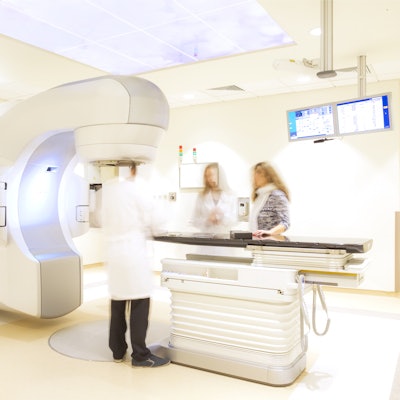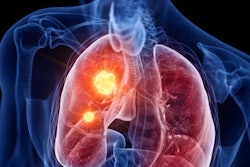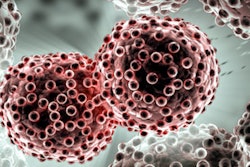
Combining neoadjuvant stereotactic ablative radiotherapy (SABR) with surgery to treat patients with early-stage non-small cell lung cancer (NSCLC) is more effective than SABR alone, according to a study published online February 21 in JAMA Oncology.
The results offer clinicians and their patients a valuable protocol for coping with this disease, wrote a team led by Dr. David Palma, PhD, of London Health Sciences Centre in Ontario.
"In this phase II study of 40 patients, the pathologic complete response rate after stereotactic ablative radiotherapy was 60%," the group wrote. "The combined treatment approach had excellent local control, a favorable toxicity profile, a 90-day postoperative mortality of 0%, and no decline in quality of life."
SABR has been a standard treatment option for people with NSCLC, but the pathologic complete response rate after SABR has been unclear, according to Palma and colleagues. The team sought to determine this response rate and investigate whether using SABR in combination with surgery would lead to better outcomes, most notably improved local control and antitumor immune activity.
"Although there are published guidelines and evidence-based systems for conducting and interpreting surveillance imaging for these patients after SABR, the accurate determination of local control with imaging alone remains challenging," the group noted.
The study included 35 patients treated between September 2014 and August 2017 with neoadjuvant SABR followed by surgery 10 weeks later. The pathologic complete response rate after SABR was determined by histology.
Palma's group found the following:
- The pathologic complete response rate after SABR was 60%.
- The 30- and 90-day postoperative mortality rates were both 0%.
- Grade 3 or 4 toxic effects after SABR and surgery occurred in seven patients (18%); these included such conditions as atelectasis, atrial fibrillation, pneumonia, and respiratory failure.
- After surgery, the two-year overall survival of patients was 77%. Local control was 100%, regional control was 53%, and distant control was 76%.
The pathologic complete response rate after SABR was lower than the researchers had hypothesized, they wrote. But the combination of neoadjuvant SABR and surgery had toxic effects comparable to surgery alone, and no deaths occurred after surgery.
"To our knowledge, this is the first prospective trial to evaluate an a priori combined treatment approach of SABR followed by surgery, demonstrating a pathologic complete response rate of 60% at a mean of 10 weeks after SABR, with reasonable toxicity and perioperative mortality outcomes compared with studies of surgery alone and no decline in quality of life," the group concluded.




















